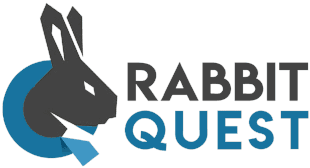Reflecting on vitality: what did you achieve and what’s next? 🎯
The year’s finish line is in sight, and it’s the perfect moment to hit pause. For HR managers, this isn’t just about wrapping up—it’s about reflecting on the goals or ideas you’ve thought of a year ago. How did we do?- you might think. What initiatives sparked energy and excitement by the employees? What challenges popped up along the way? To help you with this reflection, we’ve crafted some simple questions that will make you think about the actions of the past year. This will give you a clear view of what worked, where you can grow, and how to set new goals for a healthier, more energised workplace. Ready to dive in?
Time to read: 8 minutes
Looking back at the year’s goals 🔄
Every January starts with fresh energy and big ideas. Last year you probably also began the year with a list of vitality initiatives aimed at energising your workplace. Take a moment to map out the situation back in December 2023. What were your plans for vitality at that time? And Why is it important to collect this information? Understanding where you started helps you reflect on the goals you set in January 2024 and how far you’ve come since then.
Ask yourself: How did we approach vitality back then? What plans did I have in mind? To get the most out of your looking back, focus on gathering what you need. Start by revisiting your notes from last year—did you jot down reflections or goals? If so, review them. Dive into documents that showcase your year’s progress, like employee satisfaction surveys or year-end summaries. Think about the initiatives that stood out as successes. Were there any standout moments or activities in 2023? You can also think of gathering thoughts from employees or colleagues to build a fuller picture of what happened last year.
What great activities did you and the organization do this year? 🔥
Why is it important to look back at what you did last year? Now that you’ve mapped out where you were in January 2024, you have a clear starting point. Reflecting on your past initiatives helps you build on what worked well. You can ask yourself: what initiatives did I organise? What activities brought employees together? How has my effort in employee vitality shaped our workplace throughout the year?
To collect this information, start by going back to your notes or documents from the year. Did you noted down reflections after an initiative or review a survey? Team meeting notes can also be goldmines for this informal feedback. And don’t shy away from asking your colleagues directly—they might have insights or memories that you missed. You might be surprised by the little moments they remember.
How did all the vitality actions go? 🎢
Take a moment to press pause and reflect on everything you and your organisation accomplished around vitality this year. Book some quiet time in your calendar—because let’s be honest, reflection often gets pushed aside by daily demands. Sit down, clear your mind, and think back to all the actions you took to support vitality. What initiatives did you roll out? Did any of them surprise you by engaging employees who don’t usually join in? Even small steps, like introducing healthier snack options or setting up a mindfulness corner, contribute to a bigger picture of workplace vitality.
When it comes to evaluating these efforts, start by listing the actions taken throughout the year. Instead of focusing solely on numbers, think about the overall vibe: how were the initiatives received? Did employees feel engaged and supported? Maybe you noticed positive feedback or even informal remarks during team meetings. Don’t hesitate to reach out to employees, colleagues, or managers. Ask them how they felt about the initiatives and whether they noticed any changes in the workplace. For example, were there quieter employees who participated for the first time? These qualitative insights can help you create a fuller picture of how your vitality efforts resonated with the team. You can also look outside your organisation researching what other HR managers have tried this year.
Is there a difference between what you planned and what happened? ⚖️
What happened to your plans this year? Did everything unfold as you envisioned, or did some things turn out differently than expected? Celebrate the wins—those moments when your plans came to life and clicked with employees. Maybe you had clear goals that truly connected with your team or initiatives that encouraged participation from those who usually stay on the sidelines. Take a moment to reflect on why these efforts succeeded. Was it the timing, the communication, or the approach?
Next, think about what didn’t quite go as planned. Were there ideas that didn’t take off? Maybe time constraints, unexpected challenges, or competing priorities got in the way. Write down the hurdles you faced and ask yourself: What was holding me back? Was it time, resources, or perhaps competing priorities? Taking a moment to outline these challenges is important because it helps you see patterns and areas for improvement. Perhaps it’s allocating more time, getting additional support, or tweaking your approach that could make a big difference next year.
Sometimes, as you work toward a goal, you need to adjust plans along the way—maybe something didn’t go as expected, and you had to pivot. That’s a sign of adaptability. Perhaps an initiative needed a fresh approach or extra resources to work. If you recognising what needed to change in the moment is powerful—it helps you understand your struggles and shows how you tackled them. You’ll be better prepared to address similar challenges in 2025 and make your initiatives run even smoother.
What are your vitality goals for next year? 💡
With the lessons of this year in hand, it’s time to look ahead. What are your aspirations for vitality in the workplace next year? Think about areas where you’d like to see growth. Maybe you want to create stronger team connections, focus more on mental well-being, or boost participation in wellness activities.
To make this practical, create a simple document with three or four key questions to guide your goals. These could include: "What do I want to achieve in six months?" or "What challenges should I plan for?" Book regular reflection moments in your calendar now—whether every month or every six months—so you don’t miss the chance to review your progress.
Then, set clear, actionable goals. For example, if building connection is your priority, you could launch team-based challenges or schedule wellness check-ins. And don’t forget to anticipate obstacles. If time has been an issue, plan smaller steps that fit easily into busy schedules. By thinking ahead and staying proactive, you’ll set the stage for a year filled with progress and positivity.



